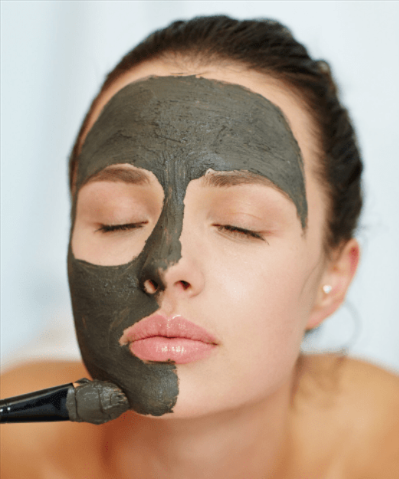Ptosis correction surgery is a delicate procedure that requires both precision and a deep understanding of eyelid anatomy. Whether you’re seeking treatment for yourself or your child, choosing the right surgeon is critical to achieving safe, effective, and natural-looking results.
But with so many specialists out there—plastic surgeons, ophthalmologists, oculoplastic surgeons—how do you know who to trust with your vision and appearance?
This guide outlines the key factors to consider when selecting a qualified ptosis correction surgeon, so you can make a confident, informed decision.
👨⚕️ 1. Choose a Surgeon Who Specializes in Eyelid Surgery
Ptosis correction is not a typical cosmetic eyelid lift—it’s a functional procedure that targets the levator muscle, which lifts the upper eyelid. This surgery demands microsurgical skill and knowledge of both aesthetics and eye function.
The most qualified specialists include:
- Oculoplastic surgeons: Ophthalmologists with additional fellowship training in plastic and reconstructive eyelid surgery.
- Ophthalmic plastic surgeons: Same as above, often board-certified and focused solely on the eyes and surrounding structures.
✅ Pro tip: Look for board certification by the American Society of Ophthalmic Plastic and Reconstructive Surgery (ASOPRS) or a similar national organization in your country.
📋 2. Verify Board Certification and Credentials
Always check that the surgeon is:
- Board-certified in ophthalmology or plastic surgery (preferably with a subspecialty in oculoplastics).
- Licensed to practice in your country or region.
- A member of reputable surgical or ophthalmological societies.
These credentials indicate that the surgeon has completed rigorous training, passed comprehensive exams, and adheres to high ethical and professional standards.
🔍 3. Ask About Their Ptosis Surgery Experience
Experience matters. You want a surgeon who performs ptosis correction regularly, not just occasionally as part of broader facial surgeries.
Questions to ask:
- How many ptosis surgeries do you perform each year?
- Do you treat both congenital and acquired ptosis?
- What is your revision rate?
- Have you treated patients with a similar case to mine?
The more specialized their experience, the better equipped they’ll be to handle complex cases and avoid complications like asymmetry, overcorrection, or under-correction.
🖼️ 4. Review Before-and-After Photos
Ask to see a portfolio of before-and-after images of patients who have undergone ptosis correction. This gives you a realistic sense of the surgeon’s aesthetic results and attention to detail.
Pay attention to:
- Symmetry of the eyelids
- Natural lid contours and crease positions
- How well the eyelid frames the eye (not too high or too low)
- Consistency of outcomes
✅ Be sure to view photos of patients with similar anatomy, age, or severity of ptosis as yourself.
💬 5. Read Patient Reviews and Testimonials
Online reviews and word-of-mouth recommendations can reveal insights into the surgeon’s:
- Bedside manner
- Communication style
- Postoperative care
- Patient satisfaction
Check reputable sites like:
- Healthgrades
- RealSelf
- Google Reviews
- Your local health board or surgical society
Look for trends—not just one glowing or negative review—and pay attention to how the surgeon handles complications or concerns.
🧑⚕️ 6. Ask About Surgical Approach and Techniques
There are several ways to correct ptosis, and the best technique depends on:
- Severity of the droop
- Levator muscle strength
- Eye health and facial anatomy
- Whether the procedure is congenital or acquired
Common ptosis techniques include:
- Levator resection or advancement
- Frontalis sling (especially in children or severe cases)
- Müller’s muscle-conjunctival resection (for mild ptosis)
A skilled surgeon will:
- Explain their recommended approach
- Justify why it fits your specific case
- Discuss pros, cons, and expected outcomes
🩺 7. Evaluate the Pre- and Postoperative Care Plan
Ptosis correction isn’t just about the surgery. Your surgeon should offer a comprehensive care plan, including:
- Detailed preoperative instructions
- Clear postoperative recovery steps
- Scheduled follow-up appointments
- Options for revision surgery if needed
Ask how they manage issues like:
- Swelling or bruising
- Dry eyes or incomplete eyelid closure
- Eyelid asymmetry
- Infection or scarring
Strong communication and aftercare are just as important as surgical technique.
💰 8. Understand the Costs and Insurance Coverage
Ptosis correction may be medically necessary if your eyelid obstructs your vision, which means it could be covered by insurance. In contrast, cosmetic eyelid lifts (blepharoplasty) typically are not.
Make sure to ask:
- Will you perform visual field testing to document impairment?
- Do you accept my insurance?
- What is included in the surgical quote (e.g., facility fees, anesthesia)?
- Are there additional fees for revisions or follow-up care?
✨ 9. Trust Your Gut Instinct
During your consultation, pay attention to how the surgeon makes you feel. You should feel:
- Heard and understood
- Comfortable asking questions
- Confident in their competence and honesty
If you feel rushed, dismissed, or unsure, consider seeking a second opinion.
📝 Final Thoughts
Choosing the right surgeon for ptosis correction is one of the most important steps in your treatment journey. Look for a board-certified, experienced oculoplastic or ophthalmic plastic surgeon with a proven track record in eyelid procedures.
By doing your research, asking the right questions, and reviewing real results, you can find a skilled professional who prioritizes both your vision and appearance—and gives you peace of mind throughout the process.




